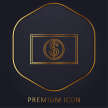
Introduction
The enigmatic allure of ancient Egypt has fascinated the world for centuries, from the grandeur of the pyramids to the mysteries of the pharaohs. But amid the treasures and tales of this ancient civilization, one intriguing and spine-tingling aspect stands out—the legends of cursed mummies. These stories have captivated the human imagination, weaving together history, archaeology, and the supernatural to create eerie and compelling narratives of misfortune, tragedy, and doom.
The Cursed Mummies: A Brief Overview
Cursed mummies, or more precisely, the concept of mummies carrying a curse, have been a prominent feature of both popular culture and serious archaeological discourse. The idea that the disturbed resting places of ancient Egyptians would bring misfortune or death to those who dared to intrude into their world is both chilling and captivating. The most famous of these tales is, undoubtedly, the legend of the curse of the pharaoh Tutankhamun, but it is just one among many in the annals of Egyptology.
The Curse of King Tut: An Iconic Tale
The story of the curse of King Tutankhamun is the most famous and enduring of all cursed mummy tales. The discovery of Tutankhamun's tomb by Howard Carter in 1922 opened a treasure trove of antiquities, but it was also shrouded in mystery and tragedy. The supposed curse, inscribed on the tomb's entrance, warned, "Death shall come on swift wings to him who disturbs the peace of the King."
Soon after the tomb's discovery, several people associated with the expedition met untimely deaths, fueling the belief in the curse. Lord Carnarvon, the financial backer of the expedition, died of an infected mosquito bite, and others involved also faced misfortune. The media sensationalized these events, creating an aura of supernatural dread.
However, modern scholarship suggests that these deaths can be attributed to natural causes rather than any supernatural curse. The curse of King Tut may have been a creation of the media, eager to sell newspapers and magazines during a time of heightened interest in all things Egyptian.
Other Tales of Cursed Mummies
Beyond King Tut, there are numerous other stories of cursed mummies. One of the earliest recorded incidents is the tale of the "Unlucky Mummy" of the British Museum. In the 19th century, the mummy was believed to bring misfortune to those who encountered it. Several people connected to the mummy's excavation and display experienced personal tragedies. The legend persists to this day, although modern curators attribute these misfortunes to coincidence rather than a curse.
Similarly, the tale of the "Screaming Mummy" is another chilling account. Although experts have debunked the myth, the story continues to capture the imagination of those who hear it.
The Curse of the Red-Haired Mummies
One of the lesser-known tales is the "Curse of the Red-Haired Mummies." In the early 20th century, a group of red-haired mummies was discovered in Egypt. Some believed that disturbing these mummies would bring misfortune and even death to those who came into contact with them. However, like many other mummy curses, the curse of the red-haired mummies has not been substantiated by scientific evidence.
The Tragic Fate of the Baskerville Mummy
Doyle's "The Hound of the Baskervilles." This connection between fact and fiction added an extra layer of intrigue to the tale.
The Modern Perspective: Debunking Cursed Mummies
While cursed mummy legends continue to intrigue and frighten, modern archaeology and science have debunked many of these myths. The alleged curses often lack any concrete historical or scientific evidence, and the misfortunes associated with them can typically be attributed to natural causes or mere coincidence.
Mummy Curses in Popular Culture
The fascination with cursed mummies extends into popular culture. Hollywood has capitalized on the allure of these stories, with films like "The Mummy" series starring Brendan Fraser and Boris Karloff's classic portrayal in the 1932 film "The Mummy." These films often blend elements of supernatural curses with adventure and horror, fueling the enduring appeal of mummy curses in modern entertainment.
The enduring popularity of mummy curses also manifests in literature, video games, and other forms of media. These narratives continue to captivate audiences and contribute to the mystique surrounding ancient Egypt and its preserved dead.
Conclusion
While many of these stories have been debunked or discredited, they continue to enthrall us with their eerie and tantalizing mix of ancient history and the supernatural. The notion that disturbing the resting places of the dead could bring about misfortune or even death carries a timeless fascination and serves as a testament to the enduring allure of ancient Egypt's mysteries. Whether one believes in the curses or not, these stories will continue to send shivers down our spines and leave us with a sense of wonder about the enigmatic world of the cursed mummies.






Comments
G.I.B is not accepting comments at the moment
Want to show your support? Send them a one-off tip.